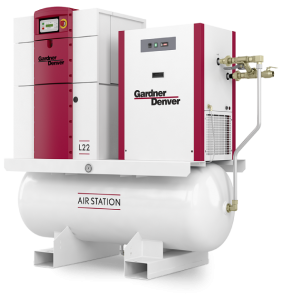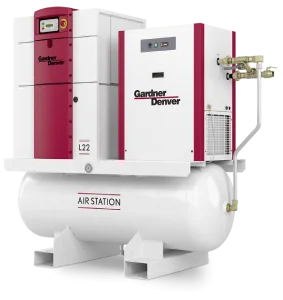
 Quick-Lock Tubing for your Compressor Lines
Quick-Lock Tubing for your Compressor LinesYou’ve set up your dream shop for woodworking or mechanical work. Or you’re expanding into an automated production of a start-up manufacturing business. Among that shiny group of equipment is a new air compressor. You’ve laid out plans to distribute your air system around the walls with drop legs for different work areas. But have you thought about the pipe materials you’ll use?
The idea that most likely comes to mind is to head to the local home store or plumbing supply and load up some PVC pipe. But that is simply a bad choice. While it may seem attractive because of the material cost and ease of installation, it is dangerous, and in some states illegal.
There’s the instance of an employee in a Texas plant who was injured by a PVC compressed air pipe that exploded, with plastic projectiles causing lacerations in his hand. There was a case in Washington State where a section of PVC pipe exploded 27 feet about a warehouse floor. A fragment of the pipe flew 60 feet and embedded in a roll of paper. In another case in Selah, WA, a PVC pipe exploded, breaking an employee’s nose and cutting his face.
A well-recognized manufacturer of PVC products, warns against using its products with compressed gases of any kind. According to Jack Roach of Colonial Engineering: “Compressed gasses can be best described as being analogous to a coiled spring. When a PVC pipe or fitting fails when under stress from compressed gas it literally explodes like a bomb, sending shards of plastic flying several feet in all directions. Liquids, on the other hand, being compressed by only 1/10 of 1 per cent contain very little stored energy. When pressurized systems with liquids fail, the energy is dissipated very quickly, thereby creating a much lower potential for hazard.”
So what are your choices? The traditional choice is iron pipe, black or, better yet, galvanized. But installing them is usually not a DIY type job. Pipe systems, like Gardner Denver’s “Quick-Lock Tubing” now on the market offer a lot of advantages. The tubing is made of extruded aluminum specifically designed for compressed air, vacuum and inert gases. They work at pressure up to 220 PSI and temperature up to 176 degrees F. The smooth bore of the tubing is more efficient for its size. For instance, a 2 inch Quick-Lock tube will flow 476 CFM at 125 whereas a 3 inch black iron pipe will flow 495 at the same pressure. The tubing fully complies with ANSI B31.1 power piping system code. Available sizes range for ½ to 2 ½ inches.
Quick-Lock fittings are push-to-connect and come in variety of configurations. The fittings are made of nickel plated solid brass with stainless steel bite ring to securely hold the tubing. Accessories like clips and wire hangers facilitate fast and easy installation of the tubing.
Give us a call for a quote on your next compressed air system or for replacing your current compressor pipework.
[/et_pb_text][/et_pb_column][/et_pb_row][/et_pb_section]


